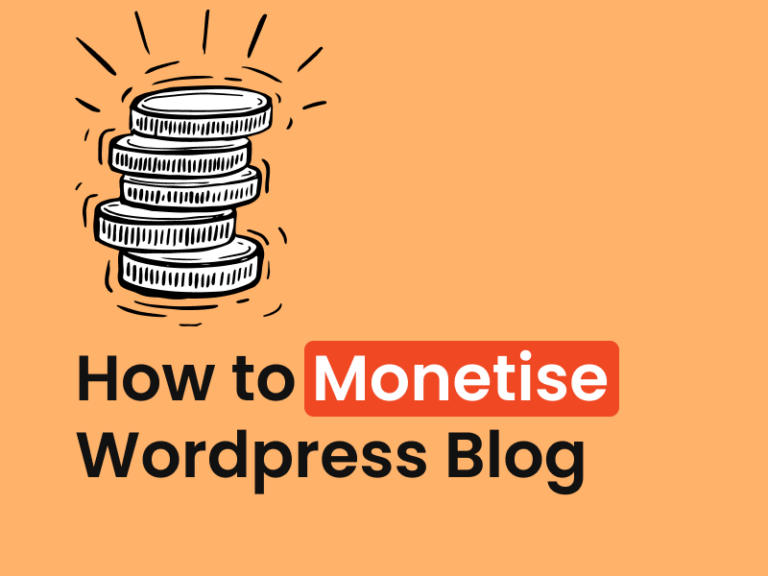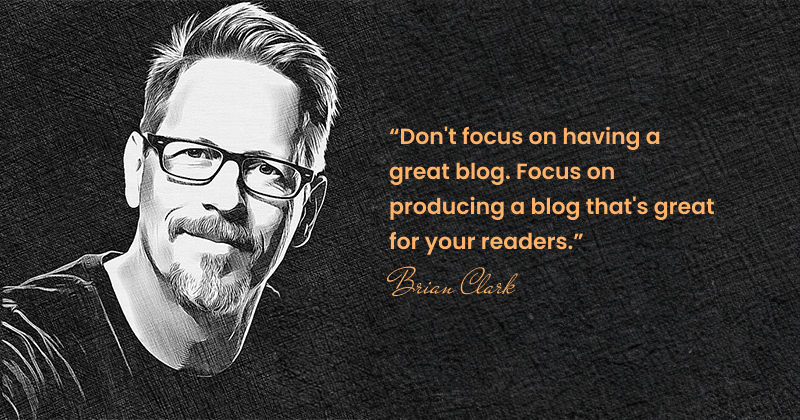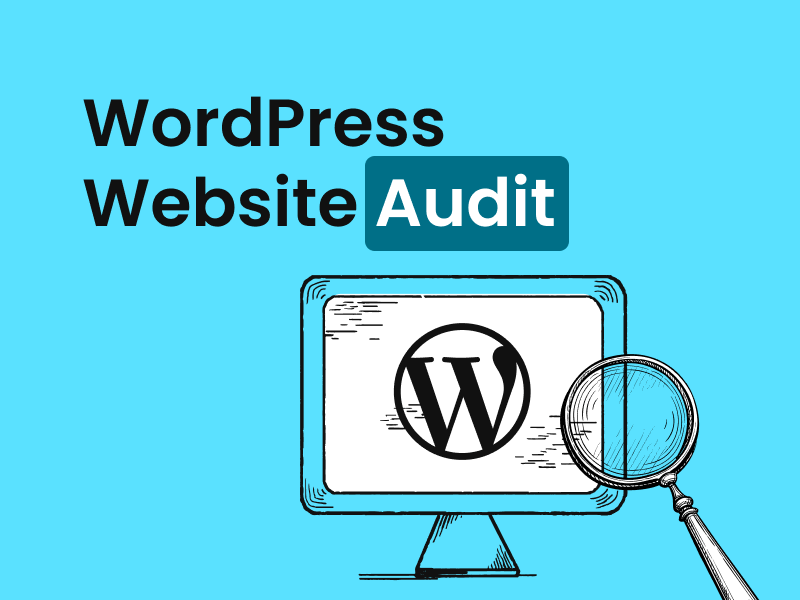How to Monetise WordPress Blog: 12 Ways to Make Money Online Blogging in 2023

By Melissa Ng | Last Updated 28 September 2023
Monetising your WordPress Blog
In the era where online presence is paramount, having a WordPress blog can be a game-changer. It’s not just a platform to express your passion, ideas, or share knowledge, but it also holds the potential to become a consistent source of income. However, navigating the world of blog monetisation can feel overwhelming, especially for beginners. There are various paths you can embark on to earn money from your blog, and finding the right fit for you and your audience is crucial. The right monetisation strategy will not only bolster your earnings but also enhance the value you provide to your readers.

This comprehensive guide will explore 12 robust ways to monetise your WordPress blog in 2023, tailored for both novice and experienced bloggers. From affiliate marketing, selling digital products or services, to leveraging advertising networks, we’ll cover a spectrum of opportunities that can be adapted to your niche, audience size, and blogging style. The journey to blog monetisation is a thoughtful process, requiring commitment and a clear understanding of your blog’s content directory potential. Equip yourself with the insights and tools shared in this guide, and you can take confident step towards making your blogging endeavour a profitable one.
Unwrapping the Benefits of Monetising Your WordPress Site
Catering to a Niche Audience
Ah, the niche audience – every blogger’s dream come true! By zeroing in on a specific topic, you attract a unique audience. You become their go-to source, their trusted expert. High-five! But remember, the secret to their loyalty is consistent, quality content. Keep them coming back for more, and the user just might end up bringing you precious revenue.
A study conducted by RankIQ found that food bloggers had the highest median monthly income ($9,169) out of all the major blogging niches, making it the most profitable niche [1].

Creating a Stream of Passive Income
Want to make money while you sleep? Who wouldn’t, right?! Monetising your WordPress blog could turn this dream into reality. Passive income, the golden goose of online entrepreneurs, earns you cash even when you’re not actively working. However, don’t let the word “passive” fool you. It may require some dedication and effort upfront, but once that cash flow is established, all you need is regular maintenance. So, keep your chin up—those late nights can pay off!

Strategy 1: Sell Exclusive Content on WordPress
A Simple Guide to Producing and Pricing Premium Content
Alright, onto selling exclusive content. You may be thinking, “How can I create and price premium stuff?” Well, first off, your premium content needs to be top-tier. It should go beyond your regular posts. This could include exclusive articles, eBooks, or printable posts the reader downloads. Consider leveraging your popular blog posts and upgrade them with bonus materials.

As for the pricing bit, it’s about finding the sweet spot. Price it too high, you might drive supporters away. Price it too low, you’re undervaluing your hard work. Start by researching what others in your niche charge. Test different price points and stick with what works best for your specific audience. Simple as that!

Advantages and Disadvantages of Selling Exclusive Content
Selling exclusive content can be quite rewarding. On the upside, it’s profitable. You get to keep the lion’s share of the profits, especially when you sell directly from your blog. Plus, it enhances your credibility. Your readers see you as a legit expert with valuable insights worth the extra dollars.
On the flip side, the production and promotion of premium content can be time-consuming. And remember, people’s expectations are higher for paid content — it has to provide significant value. Also, if you’re using a separate platform such as Patreon to promote your exclusive content, that adds another platform to maintain.
Consider these pros and cons before jumping in, and make sure it aligns with your blog and your audience’s needs.
Strategy 2: Use Affiliate Marketing on Your WordPress Blog
Useful Tips for Effective Affiliate Marketing

According to Influencer Marketing Hub, by the end of 2023, global affiliate marketing spending is set to escalate to $14.3 billion, and this figure is anticipated to climb further to $15.7 billion by 2024 [2].
Affiliate marketing is a reliable cash cow, but pulling it off just right can be a tad tricky. Don’t stress, though. Here are a few useful tips.
- Promote products relevant to your niche and believed to benefit your readers.
- Transparency is vital. Always outline your affiliate partnerships in your blog disclosure to maintain your reader’s trust.
- Credibility is gold. Recommend products or services you have personally used or genuinely believe in and aren’t a scam.
Remember, a successful affiliate marketer is all about trust and relevance. Play your cards right, and the rewards can be significant.

Advantages and Disadvantages of Affiliate Marketing
Affiliate marketing is an attractive monetisation strategy that’s constantly gaining popularity. Why? It’s relatively passive — once you’ve set up your links, they will potentially generate affiliate commissions indefinitely. Plus, there’s no cost to join most affiliate programs such as Amazon Affiliate, and the possibility of making a decent affiliate sales and income can be high, especially if you have substantial traffic.
However, it’s not all beaches and barbies. You’re trusting a third party to correctly track your affiliate marketing links, button clicks, and earnings data. Also, if your readers perceive your influencer blogging content as overly sales-oriented, you might lose their trust (and traffic). Lastly, if the product or service isn’t up to snuff, it could reflect poorly on you.
Like all things in life, affiliate marketing is a mixed bag. Weigh up these pros and cons before diving in.
Strategy 3: Boost Income with Advertising
How to Set Up and Optimise Google AdSense
Fancy some good old-fashioned banner ads revenue? Just slot in the ad codes onto your blog, and voila! Relevant ads from companies like Google AdSense will pop up automatically, making you money while you sleep.
But remember, moderation is key. Overdoing it could annoy the socks off your readers and send them packing. Keep their experience paramount, alright?

Advantages and Disadvantages of Adverts on WordPress
Advertising on WordPress has several advantages. It’s passive income requiring little maintenance once set up. Plus, you can control where and how many ads to display. For example, Alborz Fallah from Car Expert initially used Google Adsense to monetise his blog and promptly began earning approximately $200 per day. After some time, Alborz was able to collaborate directly with car manufacturers and secure sponsorship deals that resulted in payouts of up to $30,000 [3].
On the flip side, however, too many ads can irritate your readers. Plus, unless you’re drawing considerable traffic and your readers don’t have ad blockers on, your ad revenue may be on the lower side.
Mull over these pros and cons, then do what feels right for your blog.
Read our article for more information: How To Insert Ads On WordPress: Monetising Your Blog With Adsense And Advertising
Strategy 4: Sell Your Own Physical Products via WordPress
The Steps to Setup an Ecommerce Store On WordPress

According to a study by Growth Badger, 45% of bloggers who earn over $50,000 per year sell their own product or service, while only 8% of lower-income bloggers do [5].
Now, if you’re keen on selling physical products such as t-shirts and other merchandise, here’s how you get your ecommerce site up and running on WordPress.
Step 1: Install and activate the WooCommerce plugin on your WordPress website.
Step 2: Set up your store details. WooCommerce will take you through the setup, including currency, payment, and shipping settings.
Step 3: Add your products – don’t forget to include plenty of images and a cracking description. Align with your brand and target audience.
Step 4: Customise your store look to align with your brand.
Launch your store, and voila! Your ecommerce business is all set. Just remember, to win online, your ecommerce store should offer unique, top-quality products that are hard to find elsewhere.

Pros and Cons of Selling Your Own Products
Love the idea of selling your own products? Good on ya! It grants full control over product quality, pricing, and your brand representation. Also, when it hits off, it’s a reliable and continuous source of income, especially if you continue to promote your product listings on social media platforms such as Facebook, Twitter, Pinterest, Instagram, TikTok etc.
But hold on! It’s not all rainbows and unicorns. Remember, ecommerce plugins, inventory management, shipping, and customer service add to your plate. Similarly, it takes time to build trust and make those first few sales.
Never overlook these aspects — they play a significant role in the success or failure of your product-selling venture.
Strategy 5: Set Up Paid Memberships and Subscriptions
Integrated Membership Services for Revenue
Ready to set up your membership website? Brilliant! You’ll need the right tools for smooth operation, delivery, and collection of subscription payments. Consider plugins like MemberPress or Memberful, easy to integrate with WordPress and fully featured to create exclusive content, accept payments, and manage your subscribers.
Once set up, regularly release enticing content for members. Combine general access content with members-only stuff to give non-members a sneak-peek and tempt them to subscribe.
Let’s not forget community. Foster a vibrant community. It drives engagement and builds loyalty among members. And before you know it, you’ve got a nice little stream of recurring revenue.

The Potential and Pitfalls of a Subscription-Based Website
A subscription-based website can work wonders. It’s a brilliant way to generate a consistent and predictable stream of revenue. Plus, it fosters a unique sense of community among subscribers.
But, like all roses have thorns, subscription models have their pitfalls. The upfront cost and energy to create and curate superior content can be substantial. Furthermore, convincing visitors to sign up for paid content can be a bit of a challenge.
So, take a moment, jump on the scales and weigh the odds before jumping in. It’s all about the right balance, isn’t it?
Strategy 6: Sell Services as a Freelancer with WordPress
Leveraging Outreach to Capitalise on Personal Skills

Freelance services can also fetch a pretty penny, especially if you’re a wiz at optimising for keywords and SEO. The key here is strategic outreach. Pimp out your skills—the ones you do better than most people. Think graphic designing, content writing, social media marketing, or software development.
To effectively market these services, update your website to showcase case studies, testimonials, and your portfolio. Reach out to potential clients via various channels – social networks, blogging communities, and freelance marketplaces.
You’ve got a goldmine of skills. Leverage them effectively, and it can massively bolster your income!

Potential Revenue and Challenges of Selling Freelance Services
Selling freelance services can be a significant income booster. The revenue potential is brilliant, especially if you’re experienced in a high-demand field. Plus, you have control over what you charge based on the value you provide.
But don’t get too cocky. Along with the sweet, comes the bitter. Finding clients initially can be tricky, and you’d need excellent time management skills to juggle freelance services with blogging. Plus, there’s no escaping inconsistent income. The challenge is real, but so is the reward.
Strategy 7: Offer Sponsored Posts
How to Attract Brands for Sponsored Posts

According to Influencer Marketing Hub’s State of Influencer Marketing 2023: Benchmark Report, influencer marketing has grown into a $21.1 billion industry. This is a significant increase of 29% from $16.4 billion in the previous year [7].
So, you’re considering sponsored posts? To attract brands, maintain a consistent brand aesthetic and voice that’s in line with potential sponsors. Showcase impressive stats — your traffic, visitor demographics, social media followers — you get the idea.
But here’s the trickier part — approaching brands. Start with companies you’ve already mentioned in your content. If no one’s knocking yet, don’t wait — be proactive. Email them directly or tap into blogging agencies that connect brands with bloggers.
Just remember, be genuine with your recommendations. Your credibility’s at stake!

Advantages and Disadvantages of Sponsored Posts
Pub money for writing about products you love? Sponsored web pages sound like the dream gig! They generate good income and can help build relationships with influential brands.
But let’s pump the brakes for a second. Don’t forget the trust factor. You risk losing reader trust if you appear too salesy. Also, creating a sponsored post that feels genuine and enjoyable to read can be tough.
Always disclose sponsored posts to preserve reader trust. And as always, the choice is yours—weigh the pros and cons before deciding.
Strategy 8: Create and Sell Online Courses
Building an eCourse Step by Step

Interested in creating an online course? Here’s a simple step-by-step guide for course builders.
- Find your niche. What unique expertise do you have that others may want to learn?
- Map out the course structure. Think of it as a journey you’re guiding your students on.
- Use plugins like LearnPress to build your course directly on your WordPress site.
- Don’t forget to decide on pricing. Compare with similar courses to get an idea.
- Promote your course. Possibly offer a launch discount to lure in initial learners.
Simple as that! With a course management system plugin, creating a well-structured online course becomes a breeze.

Benefits and Drawbacks of Selling Online Courses
Selling online courses can be brilliant. They’re scalable — create once, sell endlessly. They can also position you as an expert in your field, boosting your credibility.
But there are some potential hiccups. Creating a quality course is time-consuming and needs consistent updates. Plus, it’s not a walk in the park convincing your followers to open their wallets.
As always, assess these factors before diving in.
Strategy 9: Accept Donations on Your WordPress Blog
Seamless Donation Collection with WordPress
Donations are an easy-peasy way to tap into the generosity of your readers. To accept donations, install a donation plugin like “GiveWP” or “PayPal Donations” and follow the setup instructions. Opt for a plugin that supports both one-time donations and recurring payments — the more options for your readers, the better.
Once everything’s set up, regularly remind your readers about supporting your work. Guilt-free, of course!

Potential Upsides and Downsides of Donations
Donations are pretty nice, and they come with a few perks. They’re easy to set up, less pressure to constantly churn out content compared to memberships, and you may attract a small group of generous donators who deeply value your work.
But, there’s a snag. Donations can be unpredictable and inconsistent. Not all readers will donate. And if you’re not a nonprofit, asking for donations may leave a sour taste with some.
Always worth doing your homework, right? Understand the upsides and potential downs, then decide if this avenue suits you.
Strategy 10: Publish Sponsored Newsletters
Crafting Engaging Newsletters for Advertisers
When it comes to crafting engaging sponsored newsletters, put yourself in your reader’s shoes. What would you want to read? Aim for content that’s valuable, engaging, and relevant to your audience.
Keep it short and sweet. Your readers are busy people – respect their time. Deliver clear, concise content that’s easy to scan.
Include a nice blend of your blogging topic content – latest blog posts, a personal story, industry updates, or exclusive tips along with the sponsored content to make it feel more organic.
Tie it all together with a catchy subject line to boost open rates, alright?

Potential earnings and Drawbacks of Sponsored Newsletters
Paid newsletters can be quite the moneymakers. You retain full control over your content — we’re talking zero ad algorithms to decipher. Plus, it’s high engagement — newsletters reach subscribers directly in their inboxes.
However, it’s not all milk and honey. Maintaining a newsletter and email list can be time-demanding, and writing content to a brand’s guidelines can require some back and forth to get things just right.
Like all things in monetisation, assess both the rewards and challenges before diving in.
Strategy 11: Start a Podcast on WordPress
The Process of Launching a Podcast
Keen on starting a podcast on your WordPress blog? Here’s the step by step.
Step 1: Create your content. Plan your episodes, record your audio file, and edit using software like Audacity or GarageBand.
Step 2: Choose a podcast hosting provider. Popular choices include Libsyn, Buzzsprout, Blubrry, or Transistor.
Step 3: Grab your podcast’s RSS feed from your host and add it to your WordPress site.
Step 4: Promote your podcast. Mention it in your blog posts, share on social media, send it to your email subscribers.
Remember, audio quality matters big time. Don’t skimp on a decent microphone.

Pros and Cons of Hosting a Podcast on WordPress
Hosting a podcast can bring loads of perks. It can open new horizons like elevated audience engagement and potential for sponsorships. Additionally, podcasting lets you reach new audiences on platforms like Apple Podcasts and Spotify.
But don’t jump the gun! It involves consistent recording, editing, and publishing. Also, without necessary tech know-how, setting up can be somewhat of a headache.
Weigh these pros and cons, then decide if this avenue is up your alley.
Strategy 12: Build WordPress Sites for Clients
Monetising Your WordPress Skills by Building Sites for Clients
Fancy using your WordPress skills to build websites for clients? Firstly, ensure your skills are top-notch. Knowledge of essential plugins and themes, SEO, and security measures, and coding are crucial.
Next, set up a striking portfolio on your site. This showcases your skills to potential clients. Start reaching out — be active on social media, freelance websites, and networking events. Always communicate clearly and maintain a professional demeanour. Remember, you’re not just building websites; you’re providing solutions.

Potential Income and Hurdles of Building WordPress Sites
Building WordPress sites can be a lucrative gig if you play your cards right. You can charge a handsome fee for a customised website. Plus, there’s always the potential for recurring income for site maintenance.
But before you get your hopes up, note the challenges. Staying up-to-date with WordPress updates, domain, plugins, and apps can be demanding. Also, consulting with client requests and navigating tricky technical issues (even simple password resets) can be stressful.
As always, do your homework, weigh the pros and cons, then give it a crack!
Making the Most of Your WordPress Monetisation Strategy
Why Audience Building is Key for Monetisation
Let’s crack on to why audience building is key for monetisation. Your audience is your income source. Be it through ad views, product sales, sponsored content, memberships – everything depends on a consistent and engaged audience.
Building a loyal audience demands quality content, a strong presence, and active promotion. It may take time, but, it’s worth every second when you see your monetization methods working wonders!
Handy Tools On WordPress to Boost Monetisation
Looking for a leg up in your monetisation game? WordPress is chock-full of handy tools.
Thinking ads? Try the Ad Inserter plugin. Affiliate links? ThirstyAffiliates is your mate. For donations, there’s GiveWP. Automate sponsored posts with WP Insert.
Remember, the right tools can take a ton of weight off your shoulders and help maximise your monetisation efforts. Choose wisely based on your unique needs.
FAQs: Your Top WordPress Monetization Strategies Questions Answered
Can I make money from WordPress with low traffic?
You certainly can make money from your WordPress blogging platform with low traffic! It’s all about being smart about your strategies. You could offer premium content or a sponsored newsletter. Alternatively, sell products, services, online courses, or even ask for donations. Essentially, focus on monetising strategies and formats that don’t rely solely on advert clicks or impressions. It might be a slow start, but don’t lose heart, the upside potential is huge!
What’s the quickest way to make money from my WordPress website?
Want quick bucks from your WordPress site? Affiliate marketing! Promote products or services from affiliate networks that fall within your niche. You’ll get a commission every time your readers click the affiliate link and make a purchase. Advertisements can also be a pretty swift way to start. But remember, patience is key. Monetisation usually takes time to gain momentum.
Do I need to spend money to make money on WordPress?
In short, not really. But investing a bit in key areas can go a long way in the long run. Think professional themes, premium plugins, a reputable host, email marketing services, or even some online ads for promotion. While WordPress itself is free, spending money on these tools can enhance functionality and potentially boost monetisation. But remember, strategic spending is the name of the game here.
Sources
[1] RankIQ: https://www.rankiq.com/most-profitable-blog-niches-study/
[2] Influencer Marketing Hub The State of Affiliate Marketing: Benchmark Report (2023): https://influencermarketinghub.com/affiliate-marketing-report/
[3] Nichehacks: https://nichehacks.com/seven-strategies-to-monetize-blog-gwvmk1/
[4] Shopify: https://www.shopify.com/au/blog/global-ecommerce-sales
[5] Growth Badger: https://growthbadger.com/blog-statistics/
[6] Freelancing in America 2017: https://www.slideshare.net/upwork/freelancing-in-america-2017#1
[7] Influencer Marketing Hub The State of Affiliate Marketing: Benchmark Report (2023): https://influencermarketinghub.com/affiliate-marketing-report/
[8] Online Education Market & Global Forecast: https://www.researchandmarkets.com/reports/4876815/online-education-market-and-global-forecast-by
Submit An App
Seen a cool app you think we should review? Submit your recommendation using our form.


